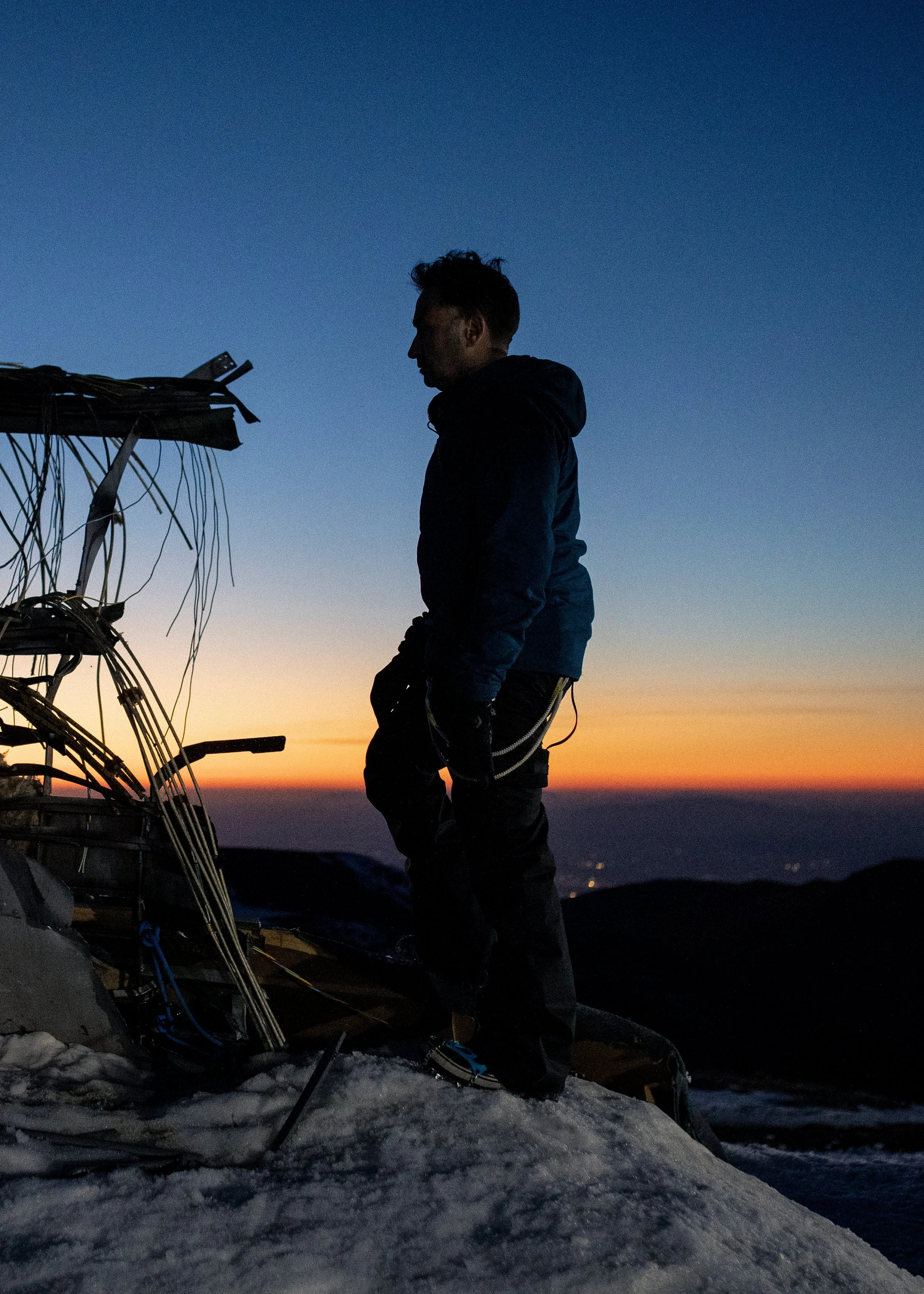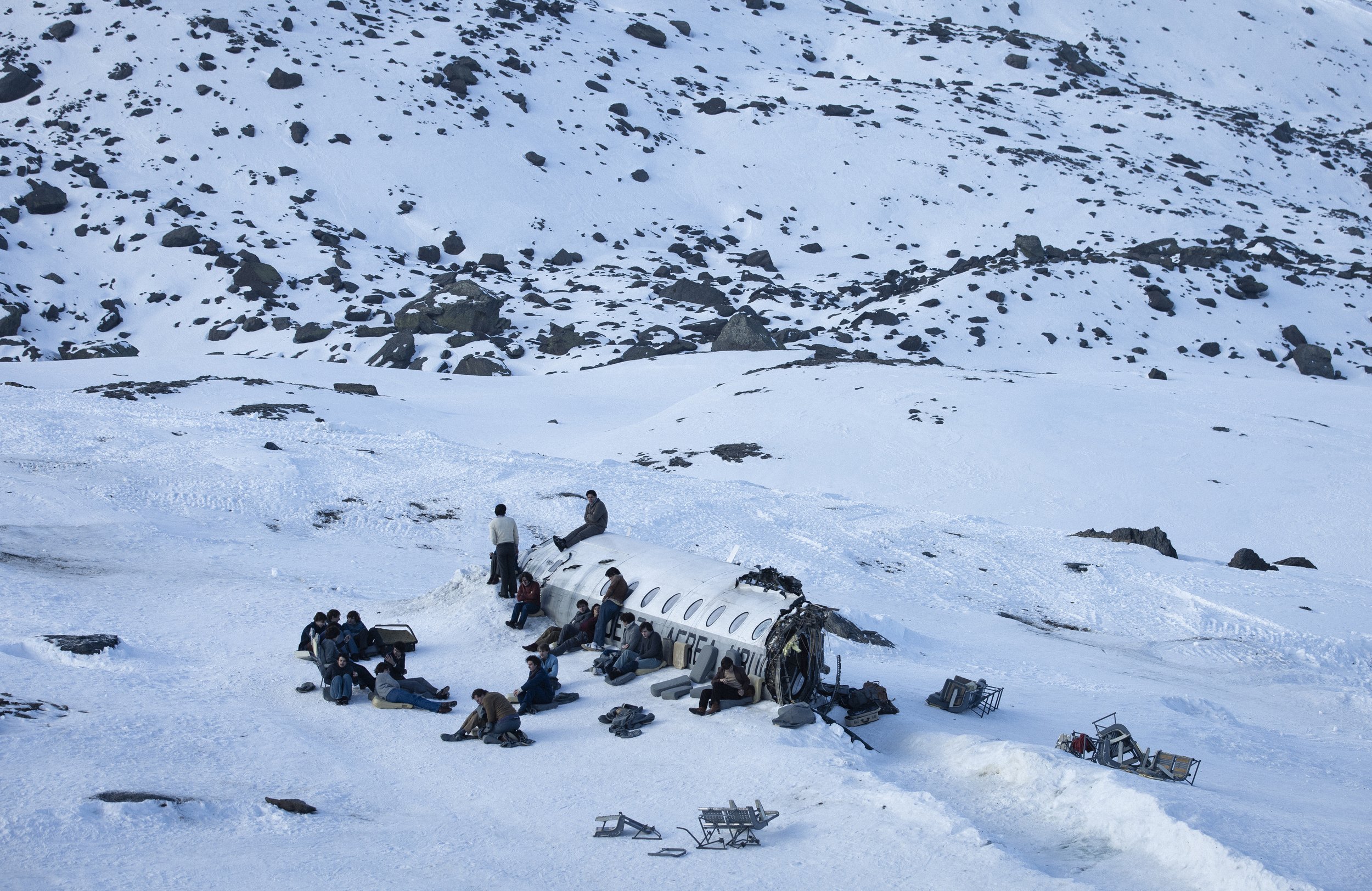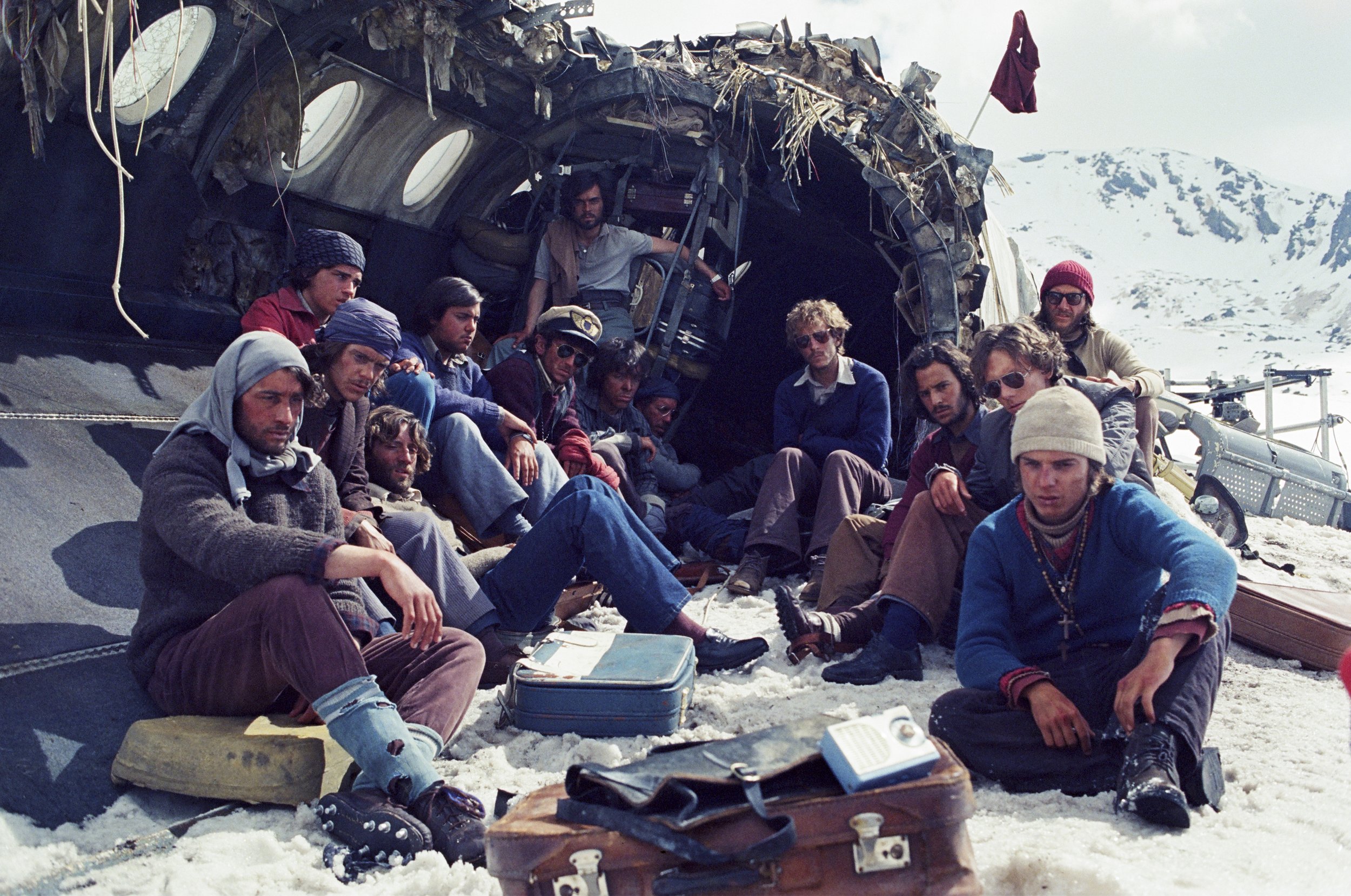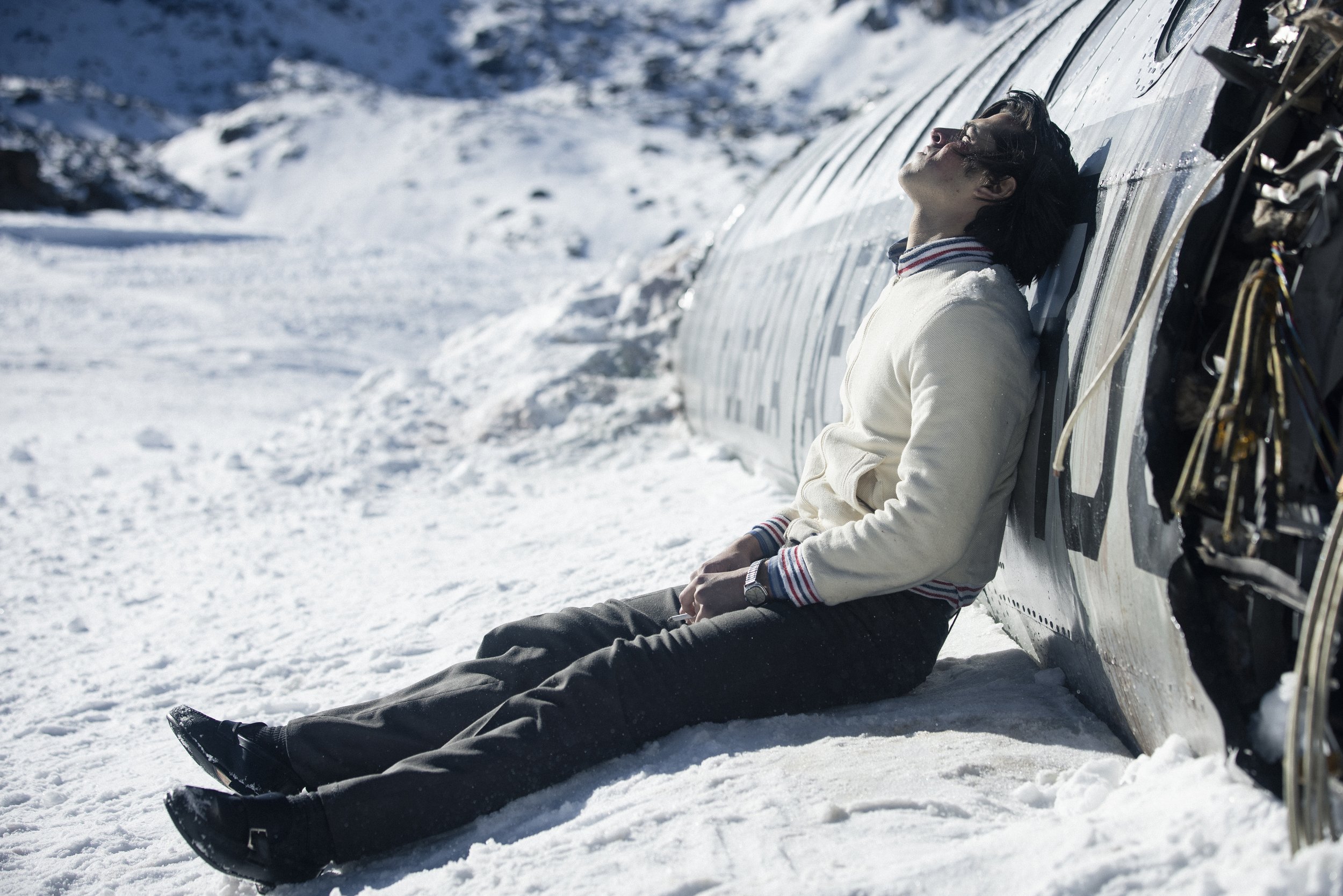Moving Mountains: Writer/Director J.A. Bayona Talks ‘Society of the Snow’
by CHAD KENNERK
While researching and preparing to make his 2012 survival film The Impossible, filmmaker Juan Antonio Bayona came across the book La sociedad de la nieve by journalist Pablo Vierci. Though the story of the 1972 Andes accident was a familiar one, Bayona had never seen the account contextualised in the same way. Uruguayan native Vierci’s book, written 36 years after the tragic events, benefitted from distance, looking beyond the facts to provide a psychological approach to the circumstances and how they shaped the survivors’ lives. After completing The Impossible, Bayona bought the rights to Vierci’s book and began a decade-long journey to bring the story to the screen.
Society of the Snow marks the writer/director’s first Spanish language film since his 2007 directorial debut The Orphanage (El orfanato). A ghost story of a different kind, Society of the Snow was designed and developed over a 10 year period, with Netflix eventually stepping in to finance the project. In the interim, Bayona went on to direct such films as the moving fantasy drama A Monster Calls and Jurassic World: Fallen Kingdom, the second instalment in Colin Trevorrow’s trilogy.
In perhaps his most personal film to date, Bayona delicately shares the intimate details of Uruguayan Air Force Flight 571 and its passengers. During the development, the filmmakers recorded some one hundred hours of interviews with all of the living survivors. Bayona cast unfamiliar faces in order to place emphasis on the film’s large ensemble, who underwent an extensive rehearsal process before shooting. As a part of that process, the actors were connected with the survivors and families of the victims to deepen their understanding of the events. As Society of the Snow arrives on Netflix, Film Review speaks with writer/director J.A. Bayona about giving voice to those lost and found in his self-discovery survival story.
In conversation with writer/director J.A. Bayona
Film Review (FR): This is a film that wouldn’t work without the actors and an ensemble performance. Can you talk about your collaboration and process of finding the truth and humanity in this story?
J.A. Bayona (JA): I love your first question. I consider the film to be an actor’s film. We’ve been working so hard with them. We did a nine-month audition process. Then we spent two months rehearsing the film, almost as if we were going to do a play. While we were doing those rehearsals, we were re-writing the film and adapting the script to the actors. Then we sent the actors to meet the real people–the survivors or families of the deceased.
Then we shot for 140 days, which is the longest shoot I have ever done, because I wanted to spend the time with them. The first thing I told the actors was, “I want you to take risks, I want you to commit mistakes. I’m ok with that. I prefer you’d try things and explore the characters.” In order to look for these moments of truth that you’re talking about. Sometimes a look between two characters or a small gesture can tell the story in a more profound way, which is basically what we were looking for. We worked hard on the script for two months, but then I allowed the actors to explore and have the freedom on set to try things.
(FR): Many of your films centre on female characters, but this ensemble of men, of brothers, each go on their own hero’s journey.
(JA): They need to find another way of masculinity. If you take a look at the famous picture that they took in the airport, there’s not a single woman in the picture. The women were out of frame. That tells you about the kind of masculinity in the 70s in Latin America. They need to relate in a different way on the mountain, just in the way they touch each other on the first night. They need to hug each other–unknown people–to keep the temperature of the body up. I thought that was interesting and also, they needed to find a different way of heroism. It doesn’t need to deal with this idea of the warrior. Numa, who is the narrator and the character at the centre, wants to be the warrior, he wants to be Nando, but he has a different way of heroism that doesn’t deal with that idea of preconceived masculinity.
(FR): It’s also a stripping away of whatever mask or personality they may have presented to the world. All of that is taken away on the mountain, so that these deeper truths and glimpses of humanity emerge.
(JA): It’s a journey. For Numa, it’s a journey of self discovery. He’s going through the primal fears: death, starvation, and abandonment. By doing so, he finds his real, true nature; this shadow part of his personality that he needs to accept in order to be able to deliver himself to the experience.
(FR): Shooting chronologically, the actors also went on a physical and psychological journey themselves. How did you, the cast and crew, take care of yourselves emotionally and physically?
(JA): To me, the most important thing is trust between the actors and the director. There’s a process, and that’s why we had all the rehearsals, where the director needs to adapt to each actor [in order] to find out what is the best way to approach each of the actors in the story. Then you need to win their trust and I need to trust them too. From the very beginning, we decided to go through the whole experience, trying to be as close as possible to the real experience, of course, with a distance to the realities.
The actors had a chance to experience the temperature of the mountain, and hunger because they went through a specific diet. They were also surrounded by a lot of people taking care of them. They had a group of three acting coaches and they also had a group of nutritionists. They had to pass a weekly exam to make sure the way they were losing weight was safe. They were losing weight for four months, some of them lost more than 40 lbs, but it was a long process following a very strict diet guided by nutritionists over four months. That was a way to get close to what we were looking for with the performances.
(FR): Another vital element to the storytelling was finding the balance between sound design, score, and silence. It’s so delicate in this film. How did you arrive at that blend?
(JA): The first thing I did when I knew that we were going to shoot the film, was to travel to the Valley of Tears, Valle de las Lágrimas, in Argentina where the plane crashed. I was, of course, very impressed with the geography. The Andes is the biggest mountain range on Earth, so the view is spectacular, but I was even more impressed by the sound. There’s not a single thing alive on that mountain. The thing that you can hear the most is yourself, your breathing, which felt very symbolic. To me, this is a journey of self discovery, going to the mountain to discover who you are. Then when you go to the mountain, the thing that you can hear the most is yourself. That was great in terms of the idea that it gave me.
As soon as I had a signal, I called my sound designer (Oriol Tarragó) and I asked him to get in contact with all the professional climbers we were with in the Andes, because the specifics of the sound on the mountain were very interesting; the way the snow cracks and the kinds of sounds. They are also very different in the morning or at night. And the silence of course. It was very interesting to explore the silence and to get the sound designer in contact with Michael Giacchino, the composer.
I think what’s very interesting about silence is that it creates a sense of anxiety in the audience. Because you’re not telling the audience what to feel, they need to fill that gap. I remember that the first compositions that Michael did were incredible. I was pleasantly surprised, because I had this kind of temp track [accompanying the film.] What Michael brought to the film was so much more interesting. We were stuck in this endless adagio and what Michael brought was very low key music, allowing the performance to be heard and seen in the film.
Then, very gradually, he started to climb the emotion up until you got to a final climax. Also playing a lot with sound design. I asked the sound designer to be in contact with Michael, so that for the first half of the film, you cannot tell what is music and what is sound. It’s when the movie gets more spiritual and into the philosophical aspects of the characters, that I allowed Michael to bring more melodies and a more lyrical approach to the score.
(FR): The landscape is also a character and you harness both the harshness and beauty of that visually. Your lens is at times so visceral and at other times so gentle and sensitive. You really seem to be working instinctually. What was your actual shooting process like?
(JA): We were very open to feeling what was happening on set. The way that I normally work, I design storyboards for all the scenes, but then I follow my intuition on set. In this film, there was a moment that I stopped looking at the storyboards and just felt what was going on in front of the camera. With the very intense range that the story has, I was unconsciously taking that into the lenses. We play with very, very wide shots and lenses that allow the audience to see the set all the time, which gives them the impression of being inside the location.
We also play with diopter lenses, macro shots where you have a very limited depth of field. I normally put the camera very close to the actor, so there is almost a psychological aspect with that lens, because it focuses you on the actor in a very primal way. So we go from these wide lenses that allow you to see the set and location, to those that feel very psychological, where you focus very closely on the actors and the performance.
(FR): Largely filmed in Spain's Sierra Nevada mountains (with backgrounds filmed at the actual crash site in the Andes), this seems like a production riddled with technical challenges. Was there one shot or moment in particular that was the most difficult to capture?
(JA): The thing is, when you shoot in the mountains–and that was our bet, going for real locations–you need to adapt to the mountain all the time. It’s the mountain who rules the schedule. We had three different sets and depending on the weather conditions, we went to a set that was on top of the mountain, in a soundstage in the middle of the mountain, or one that was at sea level. We were deciding where to shoot according to the weather conditions, so that we were able to keep shooting, but it was a very challenging shoot. Every day was complicated, because we had to deal with weather conditions.
I remember this morning where I woke up and looked at the mountain and it was totally orange. It felt like the desert in Lawrence of Arabia, because we had this Calima, which is this kind of wind from the Sahara, dragging sand [to the mountain]. The whole of Europe was tainted orange because the Calima had arrived in the north of Europe. So that day we couldn’t shoot on the mountain, we had to go to the soundstage. In Europe, it felt very hard shooting at 2,500 metres, which is around 9,000 or 10,000 feet, something like that. It’s very demanding. You need to deal with the lack of oxygen and altitude sickness all the time. Every day felt kind of complicated.
(FR): You finished with a tremendous amount of material, how did you work with your editors to sculpt the story?
(JA): That’s the nature of the film. It’s based on a book where it’s not about the facts, but more about the inner life of the characters. It’s about the spiritual layer or the philosophical layer, so it’s less about the plot and more about the mood, the performances, and the characters. In that sense, the edit felt very challenging, because it was pure alchemy. If you changed a single beat in the centre of the film, you would notice a difference at the very end. That made the whole process very challenging and organic.
We were following intuition again and trying to get to the emotional aspects that we were looking for. We were driven more by the emotion than the action. That was challenging in terms of the cut. We shot a lot of material. Because we had so many actors, we sometimes shot with two or three cameras. As I told you, I allowed the actors to embody the characters and to make the characters their own. I remember never saying “cut”, for example, because I hate those moments when you cut and you lose the energy of the actor. Also, they were going through such hard conditions. It was so cold that you don’t want the actors to be waiting on set in that situation. So I normally never stopped, we were shooting all the time.
Of course, that ended with us going to editorial every day with three or four hours of material. We finished with hundreds of hours of material, but in the end, we had a great group of editors. Two main editors (Andrés Gil and Jaume Martí), three editors helping them and three or four assistants, so it was a very good team of people working on the film.
(FR): You’ve translated this story in a way that mirrors the actual events of going through darkness to find the light. As a filmmaker, I’m curious if you experienced a moment like that yourself.
(JA): Leading by intuition and emotion, you’re dealing with something that is in you. I’m not interested in the dark, but I am interested in my own darkness, to throw some light on it. It was a nice exploration. You need to make the story your own, you need to make it feel personal. By doing so, if you touch something very profound, you will communicate that with the rest of the world. You will make it universal. The way to make stories better is to make them personal, at least that’s what I try to do. You really dig deeper in yourself and get to a place where you will be talking to the rest of the world.
(FR): Were there movie moments that inspired you to become a filmmaker?
(JA): I remember the impact of watching my first film in a movie theatre, which was Superman. I was three years old and I remember Christopher Reeve flying and being in awe watching that. After that, I was obsessed with cinema. At three or four years old, I didn’t have a camera, but I took paper and on one side of the paper I painted train tracks with a gap in the middle and a train on top. On the other side of the paper, I drew Superman. I put that paper in front of a light and turned the light on and off. By doing so, I was able to see Superman appearing and disappearing [in the tracks]. That tells you how obsessed I was with that image and not only with that, but the image in movement. I really tried to capture that movement with light and paper.
It was probably when I saw Day for Night by François Truffaut for the first time that I found out there’s actually people making the films. People taking care of the special effects and a guy in the centre who is the director. I remember watching that film and being totally fascinated by the process of making a film, but I was a film geek when I was a kid. I grew up watching all the classics on television, like Kurosawa, Welles, Hitchcock, Spielberg–all of them. I was obsessed. I’ve always been like that.
J.A. BAYONA made his directorial debut, El orfanato (The Orphanage), in 2007. Since then, Bayona has become one of the most prominent Spanish filmmakers on the international scene. In his second film, he made the leap to English-language productions with The Impossible (2012), a story of survival inspired by real events. It earned its star Naomi Watts her second Oscar nomination. He went on to direct such films as A Monster Calls (2016) and Jurassic World: Fallen Kingdom (2018), which put his personal stamp on the celebrated franchise created by Steven Spielberg, who executive-produced the film. Bayona was also the executive producer of screenwriter Sergio G. Sánchez’s directorial debut Marrowbone (2017), as well as the 2018 documentary I Hate New York by Gustavo Sánchez. For television, Bayona directed the first episodes of John Logan’s Penny Dreadful in 2014 and the first two episodes of The Lord of the Rings: The Rings of Power.









